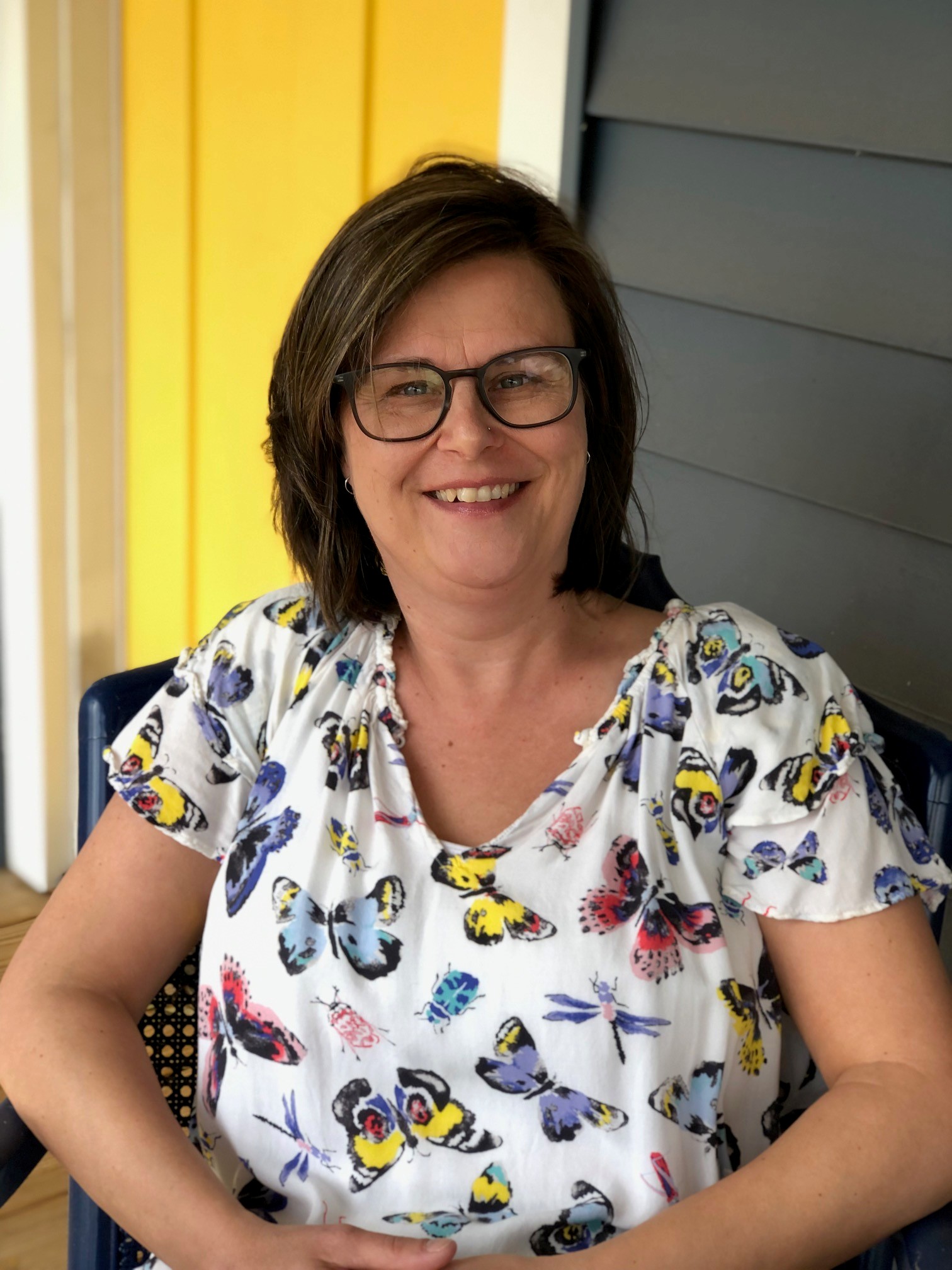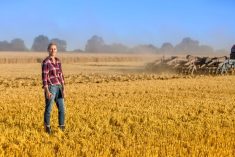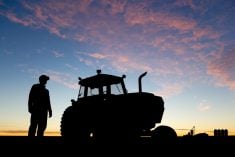Ten years. It breaks down into 3,652 days, or over 87,000 hours.
In that way, 10 years can seem like a lot of time. Yet in others, such as when managing a busy farm, it can pass in the blink of an eye.
And that decade is certainly filled with vast knowledge acquisition, unexpected surprises and important insights. To capture some of those experiences and advice, Country Guide asked a few farmers from across Canada to share the biggest lessons learned during their first 10 years in agriculture.
Read Also

The big squeeze: How to be fair to siblings during farm succession
Managing sibling business relationships on family farms.
Lesson: Diversify
In 2014, Rebecca Papadopoulos and her husband George purchased Keating Farm, one of the oldest farms on Vancouver Island, with a goal of building a diversified farm. Although the property needed serious TLC, it had a lot of the infrastructure the couple needed to start farming.
“We had orchards that were already here,” says Papadopoulos. “It was pretty amazing to buy a piece of property and our first year here, we were harvesting apples and pears.”
During four years of extensive renovation on the 28-acre farm, Papadopoulos used the available resources to begin generating sales and focused on executing a long-term plan. Keating Farm started selling pressed juices made from the fruit growing in the established orchards and expanded into eggs, honey, turkey, chicken, pork and lamb in 2018. The farm is also an agritourism destination and offers lodging for overnight visitors.
A “farm angel” mentored the engineering project manager and paramedic turned farmers on how to raise livestock and develop products for the farm. A diversified approach helped Keating Farm overcome significant obstacles with individual crops, including storms that had an impact on their apple harvest and pests that decimated their beehives.
“Things that are very much outside of our control happen every year,” Papadopoulos says. “Every time something like that happens, I think, ‘I’m glad I’m not just a honey farmer because this year we would have been done,’ or ‘I’m glad I’m not just an apple farmer because we would be (in trouble).’ So, it’s really made me a strong believer in diversification.”
Diversification has also been essential in making the Keating Farm financially viable. Individually, none of the products that the couple produce generate enough revenue to run the farm. Expanding into multiple product lines and adding agritourism have been essential to their continued survival.
“Agritourism has actually been our absolute best possible marketing tool,” says Papadopoulos. “It turned out to be the best possible marketing strategy for direct-to-consumer sales.”
But diversification comes with challenges and Papadopoulos has spent the past decade learning to navigate them. Regulatory hurdles have been the hardest to overcome.
“Every product that we raise has its own set of regulations associated with it,” she says. “For diversified farmers like us with eight or nine products, I have to go out and familiarize myself with the set of regulations for every one of those products.”
Now that the farming operation is “dialed in,” Papadopoulos wants to help other farmers create diversified, sustainable farms, explaining, “There are a lot of great opportunities for collaborative workshops… and to share our knowledge.”
Lesson: Invest in the future
Morgan Smallman joined the family farm full-time in 2014 and quickly realized there were generational differences when it came to farm planning.
“I was 28 years old and pretty excited about everything and I wanted to expand,” Smallman recalls. “My father and my uncle are at the end of their farming career, so they’re thinking about an exit strategy, where I want to farm 20 years and make it profitable. It’s an interesting dynamic to be to be working in… because there are three of us and if we’re making decisions, everybody has to be on board.”
Smallman took part in a farm transition workshop offered through Farm Management Canada that helped the family come up with a plan and honed their communication skills. He calls it “the best decision we ever made as a farm.” Now, he meets with his dad and uncle once a week to talk through farm issues and ensures the lines of communication remain open during the transition.
The process helped Smallman advocate for changes he felt were important, including investing in new technology to make the Ola, P.E.I. potato farm more efficient and profitable. He had the experience to back up his plan.
The sixth-generation farmer graduated with a double minor in business and plant science and worked in crop insurance, GPS sampling and soil health before moving back home join J and J Farms.
Smallman helped the farm expand from 200 acres of potatoes to 500 acres. He was also part of the decision to scale back the acreage after recognizing it wasn’t feasible to farm on such a large scale with older equipment and older workers.
He’s focused on improving soil health and upgrading technologies to include a GPS-enabled tractor and new potato washer. “It’s taken the farm to the next level being able to work with these tools that are out there.”
Along the way, Smallman has dealt with challenges from hurricanes to potato wart to COVID. The struggles have solidified his commitment to embracing sustainable farming strategies, such as cover crops and slow-release fertilizer. He has plans to make additional investments over the next decade, including installing solar panels and selling power back to the grid.
These initiatives require upfront investments, but Smallman hopes they will offer significant long-term dividends — and could help expand their contracts with companies, such as Frito Lay, that have encouraged their growers to use green energy and other sustainable efforts.
“I want to be the early adopter on those environmental issues,” he says. “We’ve seen that it has an effect and that we’ll be incentivized to do it and I think it’s a good way to keep moving forward.”
Lesson: Be prepared to pivot
First-generation farmer Amber Rowse-Robinson was so excited about raising livestock on her East Sooke, B.C. farm that she introduced chickens, ducks and goats in the first year. Her plan was to farm as a hobby, not a business, but strong interest in her pastured meat led Rowse-Robinson to pivot.
“We started opening up sales just to friends and family. I realized that it was an amazing privilege to be able to feed people food that they really valued and felt like they had a connection with,” she recalls. “And that’s what really spurred the business on. I realized, ‘If I could do this on a bigger scale, that would be pretty great.’”

Brass Bell Farm has gone through significant changes since Rowse-Robinson started farming in 2009. She expanded the farm to include cattle and the demand for grass-fed beef on the island was strong. The farm developed a unique niche, but everything changed when a 2023 drought fried their pastures and made it impossible to purchase hay. Rowse-Robinson made the decision to sell the cattle.
“What it would have cost to bring in feed to keep them going was not in our budget and was not going to make sense from a business perspective,” she says. “I made the really hard decision of letting them go.”
Rowse-Robinson shifted her focus to sheep. While there had been a few ewes on the farm since the beginning, she recognized that sheep were well-suited to the climate and easier to sustain during drought. Sheep were also easier for Rowse-Robinson, who farms mostly solo with occasional help from her husband, to manage on her own. The fact that there were multiple revenue streams from a single flock was also attractive.
Brass Bell Farm purchased a flock in 2024, and Rowse-Robinson plans to establish a dairy, sell lambs to local farms and restaurants, and, eventually, market the fibre. The shift, she acknowledges, was difficult, but also exciting.
“Pivoting from the focus on beef to sheep was fairly significant,” she says. “In the moment it felt awful… I’d made all this progress and a lot of sacrifices over the years to build up what we had and then I saw it all driving away in the back of a trailer. Once I had my time to be heartbroken, I was ready to tackle the next thing.”
Her 15 years of experience has included a lot of trial and error, but Rowse-Robinson feels more confident in planning for the next decade.
“We probably have a clear idea of what we want to do and how we’re going to do it,” she says. “And if we can make these systems viable, we can support new and young farmers to get their start.”

Lesson: Never stop learning
Jim Lavers got the idea to grow Christmas trees from a tree farming friend in Nova Scotia who wanted to expand in Ontario. After researching the local market, he realized that many local Christmas tree farms had gone out of business and decided to fill the gap by starting the Christmas Tree Farm. There was just one problem: Lavers and his wife, Deni, spent their entire careers in the military and had no experience in agriculture.

“The learning curve was quite steep,” he recalls. “We joined the Christmas Tree Farmers of Ontario before we even bought a farm and spent the next two years basically learning everything we could.”
Taking a tactical approach to farming served Lavers well. He attended association meetings and field days, took business planning classes and met with mentors before the first saplings were planted at their Harrowsmith, Ont. farm in 2012.
Growing Christmas trees has proven challenging. Lavers has dealt with poor soil depth, gypsy moth infestations and climate change. A 2016 drought wiped out 2,500 trees — more than half of his plantings — and made him question whether to continue farming.
“It was really eye-opening for us,” he says.
The support of mentors and advice from other growers led to the decision to install an irrigation system that helped them get back on track. Even at peak production, the Christmas Tree Farm can’t meet the demand for locally grown Christmas trees.
The farm sold 1,750 trees in 2024, including 600 trees cut fresh from the farm with the rest shipped in from other growers. Tourism is a huge element of their business and the “Hallmark experience” draws thousands of visitors around the holidays.

Although Lavers has run a successful Christmas tree farm for more than 10 years, he still looks for opportunities to learn new things. He participates in association meetings and workshops, attends field days and reads about the latest agritourism trends.
Lavers is also eager to share his knowledge with the next generation of growers. He shares his contact information with new members of Christmas Tree Farmers of Ontario and has invited potential growers to the farm to get more information. Growing Christmas trees is a long game, he explains, and he wants to make sure that potential farmers have the information they need to make smart decisions.
“You have to learn your discipline before you start. You absolutely cannot walk onto a farm and expect to start raising Christmas trees without getting the required background,” he says.
“We’re always open for people interested in doing a like-minded thing to learn from us.”
















